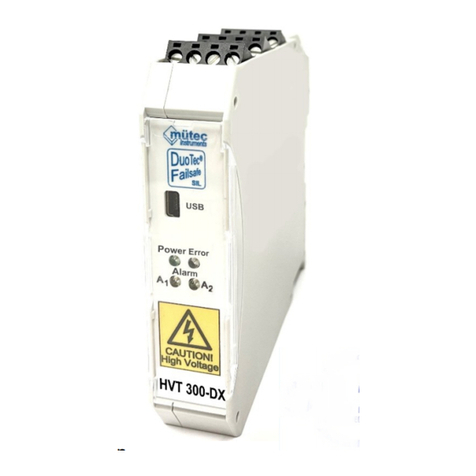Table of contents
Classification of safety instructions............................................................................................. 4
General instructions ................................................................................................................... 5
Introduction ................................................................................................................................ 6
1. General information for installation and operation......................................................... 7
2. Electrical maximum values............................................................................................... 9
3. Technical Features.......................................................................................................... 11
4. Fault conditions and fault signalling.............................................................................. 12
5. Technical Data................................................................................................................. 13
5.1. Configuration protocol .............................................................................................................................17
5.2. Basic Circuit Diagram...............................................................................................................................18
5.3. General view..............................................................................................................................................19
5.4. Contacts and female multipoint connector’s coding.............................................................................20
5.5. Jumper-settings........................................................................................................................................21
6. Configuration program.................................................................................................... 22
6.1. Menu bar and commands.........................................................................................................................23
6.1.1. File Load configuration...................................................................................................................23
6.1.2. File Save configuration ..................................................................................................................23
6.1.3. File Print configuration...................................................................................................................23
6.1.4. File Print comment.........................................................................................................................23
6.1.5. File Quit program...........................................................................................................................23
6.1.6. Access rights Enter password........................................................................................................23
6.1.7. Access rights Change password Password level 1...................................................................24
6.1.8. Access rights Change password Password level 2 ...................................................................24
6.1.9. Calibration Calibrate input PT-100 ............................................................................................24
6.1.10. Calibration Calibrate input Thermocouple .................................................................................26
6.1.11. Calibration Calibrate input Resistance, Current and Voltage.....................................................27
6.1.12. Calibration Calibrate output Current or voltage .........................................................................28
6.1.13. Restore configuration .........................................................................................................................28
6.1.14. Language English, German, Dutch...............................................................................................29
6.2. Interface and connected devices.............................................................................................................29
6.2.1. Reading MTP data .............................................................................................................................29
6.2.2. Programming MTP data .....................................................................................................................29
6.2.3. Overwriting calibration values.............................................................................................................29
6.2.4. PC interface........................................................................................................................................29
6.2.5. MTP-address......................................................................................................................................30
6.2.6. Connected MTP devices Search for addresses.............................................................................30
6.3. MTP identification.....................................................................................................................................30
6.3.1. Serial No.............................................................................................................................................30
6.3.2. TAG No. .............................................................................................................................................30
6.3.3. Address..............................................................................................................................................30
6.4. Measuring input ........................................................................................................................................31
6.5. Analogue output........................................................................................................................................33
6.6. Alarm outputs............................................................................................................................................34
6.6.1. Differentiated gradient alarm and the parameter settings...................................................................35
6.7. Monitoring conditions ..............................................................................................................................36
6.8. Diagnostic manager..................................................................................................................................39
6.9. Comment memory.....................................................................................................................................40
6.10. Online representation...............................................................................................................................41




























